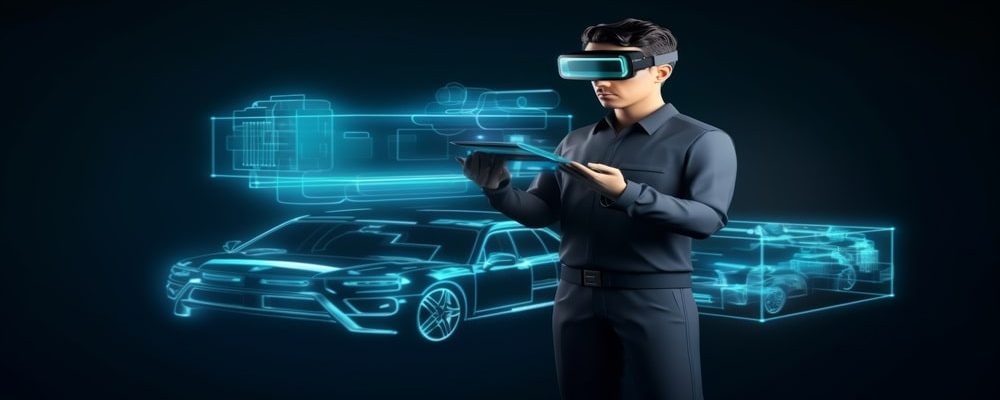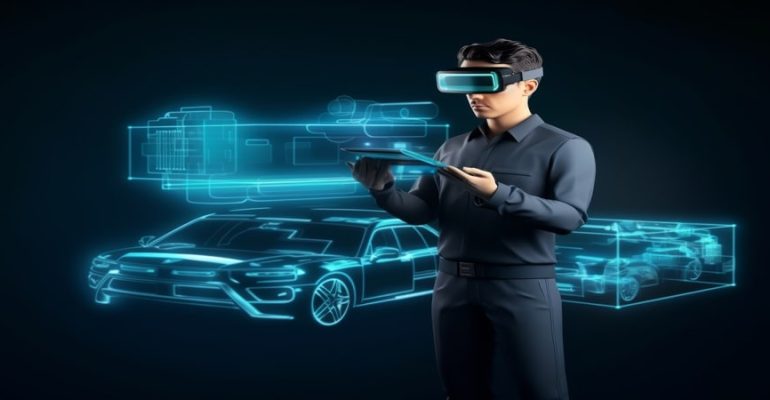
Why Automotive Brands Are Investing in XR to Boost Customer Experience

Why Automotive Brands Are Investing in XR to Boost Customer Experience
An automotive industry is going through one of its biggest transformations in decades. With rapid advancements in technology and changing consumer expectations, car brands are now leveraging Extended Reality (XR) to deliver immersive, personalized, and memorable customer experiences.
From virtual car showrooms to AR-powered vehicle manuals, XR is redefining how customers interact with brands even before they step inside a dealership. Automotive companies are investing heavily in XR to stand out in a competitive market, increase sales, and build lasting customer relationships.
In this blog, we’ll explore why XR is becoming a game-changer for the automotive sector, how it enhances customer experience, and why now is the perfect time for brands to adopt it.
What is XR in the Automotive Industry? \
Extended Reality (XR) is a collective term for Virtual Reality (VR), Augmented Reality (AR), and Mixed Reality (MR). These technologies blend digital elements with the real world, creating immersive experiences for users.
- Virtual Reality (VR): A fully immersive 3D environment, perfect for virtual test drives or design simulations.
- Augmented Reality (AR): Overlays digital information onto real-world views, such as AR-powered user manuals or vehicle feature demonstrations.
- Mixed Reality (MR): Combines AR and VR, allowing customers to interact with digital car models in real-time.
In the automotive industry, XR is used across design, manufacturing, marketing, training, and customer engagement, making it a vital tool for modern businesses.
Why Automotive Brands are Embracing XR
The shift toward digital-first experiences has made XR essential for brands looking to deliver personalized and engaging interactions. Here’s why top automotive companies like BMW, Audi, and Tesla are making big investments in XR.
Virtual Showrooms for a Seamless Buying Experience
In the past, car shopping meant visiting multiple dealerships, dealing with sales pitches, and browsing limited inventory. XR completely transforms this process by offering virtual car showrooms accessible from a phone, VR headset, or even in-store screens.
Benefits:
- Customers can explore every model, variant, and color without leaving home.
- Interactive 360° views allow buyers to customize vehicles in real-time.
- Reduces dealership dependency and speeds up purchase decisions.
Example: Audi introduced VR showrooms, allowing customers to virtually explore cars and configurations that might not be physically available at the dealership. This not only enhanced customer satisfaction but also increased conversion rates.
Immersive Virtual Test Drives
Test drives are a critical part of the car-buying journey, but scheduling them can be inconvenient for both customers and dealerships. XR solves this challenge by offering virtual test drives that are realistic, interactive, and scalable.
Benefits:
- Customers experience driving a car without physical constraints.
- Perfect for showcasing safety features, performance, and advanced technology.
- Reduces costs for dealerships by limiting physical test drives.
Example: Tesla has leveraged VR and AR to demonstrate features like Autopilot, giving buyers a hands-on feel before they even step into the vehicle.
Personalized Car Customization
Today’s customers want tailored experiences, especially when making big-ticket purchases like cars. XR enables personalized customization, allowing buyers to design their car down to the smallest detail.
Benefits:
- Visualize different colors, interiors, wheels, and accessories in 3D.
- See real-time updates on pricing and availability.
- Increases customer satisfaction and reduces decision fatigue.
Example: BMW offers an AR app where users can configure their dream car and even view it in their driveway using their smartphone camera.
Enhancing After-Sales Support with AR
After-sales service plays a huge role in customer retention. XR makes vehicle maintenance and troubleshooting simpler and more engaging.
Benefits:
- AR-powered manuals guide customers through basic repairs and maintenance.
- Service technicians can use AR glasses for hands-free repair instructions.
- Reduces customer frustration and improves brand loyalty.
Example: Porsche introduced AR glasses for service teams, reducing repair time by 40% and improving accuracy.
Boosting Brand Engagement Through Immersive Marketing
XR-powered marketing campaigns capture attention and create buzz. Automotive brands use XR to engage customers in ways traditional advertising can’t.
Examples of XR Marketing:
- AR filters on social media to let users “try” different car models.
- Virtual brand events showcasing new launches.
- Interactive ads where customers explore a car’s features through VR.
This creates a memorable brand experience, leading to higher engagement and conversions.
Training Sales Teams and Dealership Staff
A knowledgeable sales team can make or break the customer experience. XR-based training helps staff learn complex vehicle features in a more interactive and effective way.
Benefits:
- Hands-on learning without needing physical cars for training.
- Standardized training across multiple dealership locations.
- Faster onboarding for new employees.
Example: Jaguar Land Rover uses VR to train its technicians and sales staff on new models before they are launched.
The Business Impact of XR in the Automotive Industry
Adopting XR isn’t just about enhancing customer experience; it has a direct impact on a company’s bottom line.
| Business Area | Impact of XR |
| Sales Conversions | 20-30% increase through personalized experiences |
| Operational Costs | Reduced dealership overhead and physical inventory |
| Customer Retention | Improved loyalty through engaging after-sales |
| Training Costs | 40% reduction in training time and expenses |
| Marketing ROI | Higher engagement and lower acquisition costs |
Challenges Automotive Brands Face with XR Adoption
While XR offers immense potential, there are a few hurdles brands need to overcome:
- High initial investment in hardware and software.
- Technical skill gaps within teams.
- Ensuring seamless integration with existing digital platforms.
- Data privacy concerns, especially in customer interactions.
However, with the rapid growth of XR technology, these challenges are becoming easier to tackle, making XR more accessible even for mid-sized brands.
Why Now is the Right Time to Invest in XR?
The global XR market is projected to grow to $125 billion by 2026, with the automotive industry being a major contributor. With customers expecting digital-first, personalized interactions, brands that delay adopting XR risk falling behind competitors.
Here’s why 2025 is the perfect time to integrate XR:
- Wider availability of affordable XR devices.
- Increasing customer demand for immersive experiences.
- Post-pandemic shift toward virtual and hybrid car-buying journeys.
- Rapid advancements in cloud-based XR solutions.
Why Choose Sapizon Technologies for XR Solutions:
At Sapizon Technologies, we specialize in delivering cutting-edge XR solutions tailored for the automotive industry. Our team helps brands design custom virtual showrooms, immersive test drive experiences, AR-based maintenance tools, and more.
With our expertise in XR, we ensure seamless integration, scalability, and a measurable ROI for your business. Whether you’re looking to enhance customer engagement or internal processes, Sapizon can help you stay ahead in a rapidly evolving market.
Conclusion
The future of the automotive industry is immersive, interactive, and customer-driven. XR is no longer a futuristic concept – it’s a strategic necessity for brands that want to stay competitive and deliver exceptional experiences.
From virtual showrooms to AR-powered after-sales support, XR is transforming every stage of the automotive customer journey. As more brands adopt this technology, the gap between innovators and laggards will continue to grow.
Now is the time for automotive companies to invest in XR and create personalized, engaging, and unforgettable experiences that turn prospects into lifelong customers.